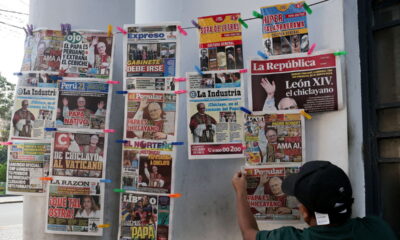A few years ago, Wes Bellamy, 38, took stock of his investment accounts in preparation to buy a home in Charlottesville, Virginia. It was then that he noticed significant gains in his 401(k).
Although Bellamy, who is the chair of the political science department at Virginia State University, had been saving diligently for nearly a decade and making the most of his employer’s matching program, he said seeing his retirement account balance was “a pleasant surprise and a nice nest egg.”
Since then, his 401(k) balance has continued to grow. “I’m at $980,000 — I’m not at a million yet but I’m close.”
More millennials are 401(k) millionaires
Saving $1 million for retirement used to be considered the gold standard, although these days financial advisors may recommend putting away even more.
Millennial workers are still the most common generation to say they’ll need at least $1 million to retire comfortably, according to a recent report by Bankrate, and, for the first time, a larger share of younger retirement savers are reaching that key savings threshold.
The number of millennials with seven-figure balances has jumped 400% from one year ago, according to the data from Fidelity Investments prepared for CNBC.
Among this group, the number of 401(k) accounts with a balance of $1 million or more rose to about 10,000 as of Sept. 30, up from around 2,000 in the third quarter of 2023, according to Fidelity, the nation’s largest provider of 401(k) plans. The financial services firm handles more than 49 million retirement accounts altogether.
Generally, reaching 401(k) millionaire status only comes after decades of consistent contributions, making it a harder milestone for younger workers to achieve.
This year, positive market conditions helped boost those account balances to new highs. The Nasdaq is up 29% year to date, as of Dec. 19, while the S&P 500 notched a 23% gain and the Dow Jones Industrial Average rose more than 12%.
“Even shorter-term savers have done well because of significant market gains,” said Mike Shamrell, Fidelity’s vice president of thought leadership.
“If we continue to see positive market conditions, we could see not only the overall number of millionaires overall bump up over that threshold but also more millennials,” Shamrell said.
Whether savers benefit more from long-term savings efforts or a favorable investment environment, “the reality is, it’s a blend of both,” financial advisor Jordan Awoye, managing partner of Awoye Capital in New York, said.
Further, millennials — the oldest of whom will be 44 in 2025 — are nearing their peak earning years, he said, “which is making it more enticing to save for retirement.”
More from Personal Finance:
There’s a higher 401(k) limit for 2025
Why new retirees may need to rethink the 4% rule
Slash your 2024 tax bill with these last-minute moves
Still, reaching the million-dollar mark “is not everything,” Awoye said.
Heading into a year of potential volatility, those balances will fluctuate, perhaps even dramatically. However, there is still plenty of time before millennial savers will need to access those funds in retirement. “You are likely not touching that money for 20 years. Even if [the market] goes up and down, stick to the script,” Awoye said.
“When you are retirement planning, you have to remember to tie it back to your North Star, which is your goal.”
How to become a 401(k) millionaire
Certified financial planner Chelsea Ransom-Cooper, chief financial planning officer of Zenith Wealth Partners in New Jersey, works with mostly millennial clients. She says she often encourages them to contribute more than what’s necessary to get the full employer match — even up to the maximum annual contribution limits for a 401(k) or IRA.
In 2023, only 14% of employees deferred the maximum annual amount into 401(k) plans, according to Vanguard’s 2024 How America Saves report. But that’s a missed opportunity, Ransom-Cooper said.
In 2025, employees can defer $23,500 into workplace plans, up from $23,000 in 2024. (The IRA contribution limit is $7,000 for 2025, unchanged from 2024.)
At the same time, employer contributions are climbing. Together, the average 401(k) savings rate, including employee deferrals and company contributions, rose to 12.7% in 2023, up from 12.1% the year before, according to the Plan Sponsor Council of America’s annual survey of 401(k) plans.
That’s made a big difference, Ransom-Cooper said. “There’s more money that can go into these accounts outside of the employee contribution, that can be really helpful to push these accounts higher and help people reach their retirement goals.”
While there is always the chance that a market downturn will take a toll on these balances in the year to come, the markets are up more than they are down, Ransom-Cooper said. “They can weather those tougher days in the shorter term.”
“Staying the course and keeping that longer term vision is really helpful,” she said.
Bellamy says his goal is to retire in another 20 years, before reaching 60. “Then, I’ll have another 15, 20 years to live my life freely as I want to.”
Subscribe to CNBC on YouTube.


 Accounting1 week ago
Accounting1 week ago
 Finance1 week ago
Finance1 week ago
 Economics7 days ago
Economics7 days ago
 Finance1 week ago
Finance1 week ago
 Economics1 week ago
Economics1 week ago
 Economics1 week ago
Economics1 week ago
 Personal Finance5 days ago
Personal Finance5 days ago
 Economics5 days ago
Economics5 days ago













